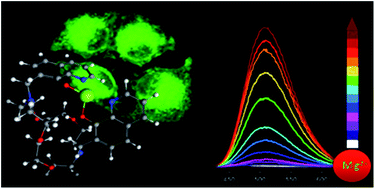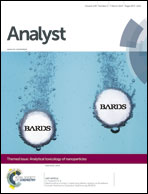A novel fluorescent chemosensor allows the assessment of intracellular total magnesium in small samples†
Abstract
The present study investigated the analytical capabilities of a new fluorescent chemosensor, named DCHQ5, a phenyl derivative belonging to the family of diaza-crown-hydroxyquinolines, for the quantitative assessment of total intracellular Mg content. The results obtained were compared to the analytical performances of DCHQ1 – the parent probe of the series which so far was the only suitable species for the quantitative assessment of the intracellular total magnesium and showed comparable results to atomic absorption spectroscopy. Different protocols were tested in several cell lines both by flow cytometry and by steady state fluorescence spectroscopy assays. The results obtained support the possibility to use DCHQ5 to accurately quantify the intracellular total Mg in much smaller samples than DCHQ1, also displaying an increased stable intracellular staining. These features, combined with the high fluorescence enhancement upon cation binding, and the possibility to be excited both in the UV and visible region, make DCHQ5 a valuable and versatile analytical tool for Mg assessment in biological samples.


 Please wait while we load your content...
Please wait while we load your content...